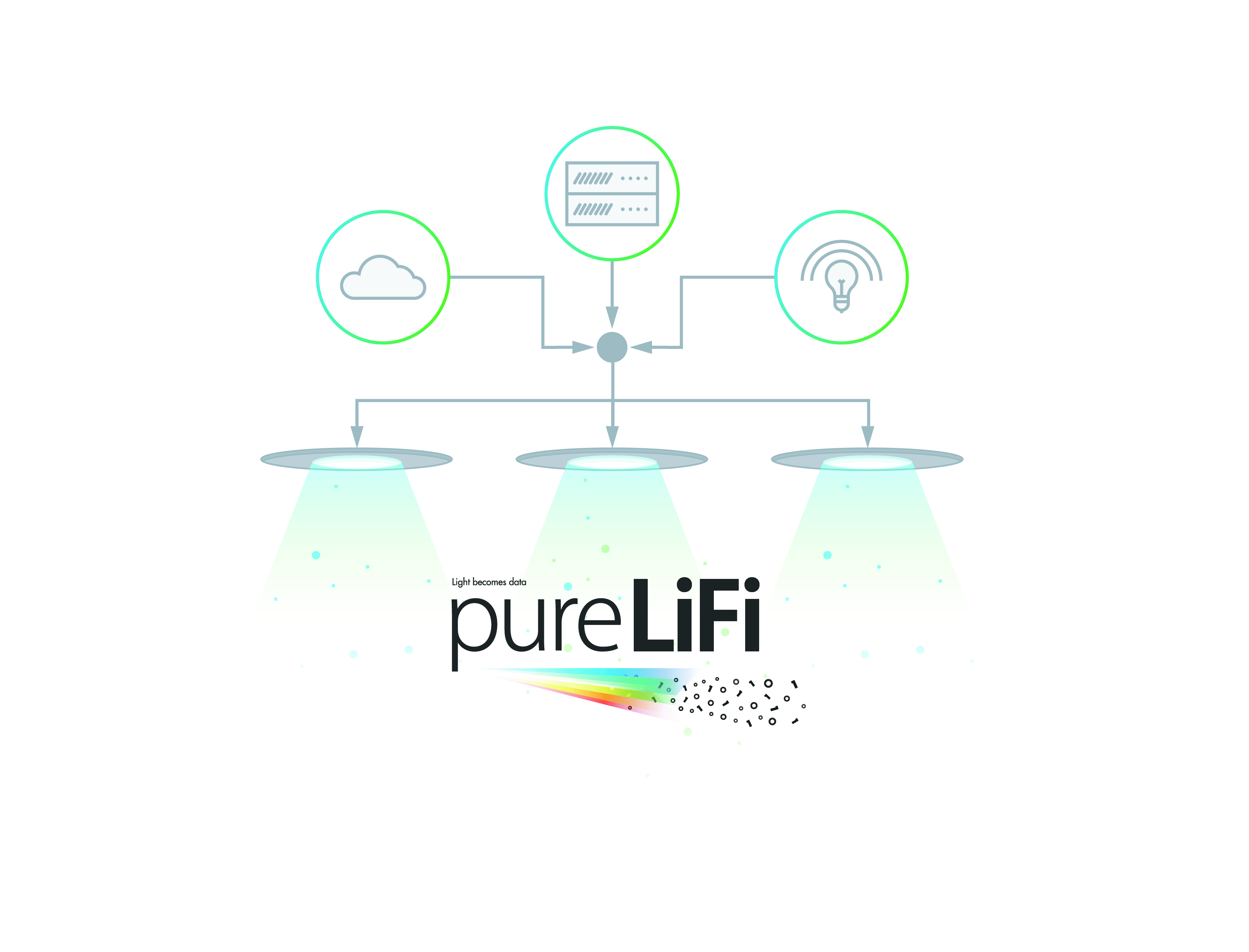Shedding Light on LiFi
For many of us Wi-Fi feels omnipresent. Wireless data has become an essential commodity in our daily life, synonymous with electricity and lighting. Wi-Fi is everywhere; our neighbours have it, it’s free in shops, restaurants, trains and airports. We all know and understand the bene ts of Wi-Fi, but what is LiFi and why is it so signi cant? connected future?
LiFi is important because it opens up a spectrum of connectivity that is 1000 times greater than Wi-Fi.
LiFi, like Wi-Fi, enables electronic devices
like laptops, tablets, and smartphones to connect wirelessly to the internet. Wi-Fi achieves this using radio frequencies, but LiFi achieves this using the light spectrum which can enable unprecedented data and bandwidth.
It’s important to consider that wireless data is required for more than just our traditional connected devices – today our televisions, speakers, headphones, printer’s, VR goggles and even refrigerators use wireless data to connect and perform essential communications. In fact, it is predicted that by the year 2020 there will be 20 billion devices wirelessly connecting to the internet. Additionally, almost 80% of the wireless data is being consumed in the form of bandwidth intensive video that enables popular software and applications such as social media, video streaming services such as Net ix, virtual and augmented reality.
Radio frequency technology like Wi-Fi is running out of spectrum to support this digital revolution and LiFi can help power the next generation of immersive connectivity.

The difference between LiFi and Wi-Fi?
Congestion
Wi-Fi uses radio frequencies, and these are very limited. Devices computers, laptops, printers, smart
TVs, smartphones and tablets must compete for bandwidth. The emergence of more and more Wi-Fi- enabled things e.g. refrigerators, watches, cameras, and o oading from cellular is causing congestion, and degrading data communications. Li-Fi uses the frequencies of light waves, which are 1000 times more plentiful than radio frequencies and do not interfere with radio frequencies.
Density
Imagine an o ce of 460 sq metres with 80 employees working on tablets and laptops wirelessly. Typically for every 200 square metre there would be one wireless Wi-Fi router providing approximately 1 Gbps. This would mean there would be a total of 2 Gbps for the entire o ce to share. However, imagine that the entire lighting structure of the o ce was LiFi enabled. Even if conservatively the o ce only had 100 lights in the ceiling that would provide more than 4 Gbps for the o ce to share and if that’s not enough all you have to do is add more lights. However, you can’t add more Wi-Fi routers as they interfere with each other. The amount of available data per square metre of space in a room will always be greater with LiFi.
Security
Radio waves pass through walls and ceilings. Light doesn’t. Therein lies the di erence in data security between Wi-Fi and LiFi. An intruder or hacker, outside a building can tap into the Wi-Fi data communications of computers inside the building. Data communicated via LiFi can only be accessed where the LED light illuminates.
Safety
Wi-Fi creates Electromagnetic Interference (EMI), known to interfere with airplanes’ instruments and equipment in hospitals, and is potentially dangerous in hazardous operations, such as power/nuclear generation or oil and gas drilling. Li-Fi uses light instead of radio waves, which is intrinsically safe and does not create EMI.
Speed
The older versions of the Wi-Fi standard, like IEEE 802.11a/g, specify data rates up to 54Mbps. However, the newer Wi-Fi standards, like the 802.11ac provide technologies that can extend these data rates
to 1Gbps and beyond. Indeed, the 802.11ad can achieve data rates of up to 7 Gbps. The University
of Edinburgh, pureLiFi’s partner and home to Prof. Harald Haas – “the father of Li-Fi”, have already demonstrated data rates over 3 Gbps with a single blue micro-LED. On a single light with three colour LEDs (R,G,B) this translates to theoretical data rates of up to 9 Gbps, showing great promise of this rapidly maturing technology.
The History of LiFi
Alexander Graham Bell is most famous for inventing the telephone, but he also demonstrated the rst VLC system in 1880. In fact, only 4 years after inventing the telephone, Bell demonstrated the world’s rst wireless telephone call. He did this with an apparatus called a Photophone that used light, not radio. Bell had to use daylight for transmission, which severely limited its practical use. Professor Harald Haas and his research team rst developed the modern concept of Li-Fi at the University of Edinburgh, ironically in labs within the Alexander Graham Bell Building (Bell was born in Edinburgh and attended the University). Li-Fi was developed as a solution to the growing radio spectrum congestion problems. Haas demonstrated the technology by streaming live video for the rst time at TED Global in July 2011, and the term ‘Li-Fi’ was coined by him during this talk. The company pureVLC (www. purevlc.com) was created in 2012, in order to commercialise Li-Fi.
